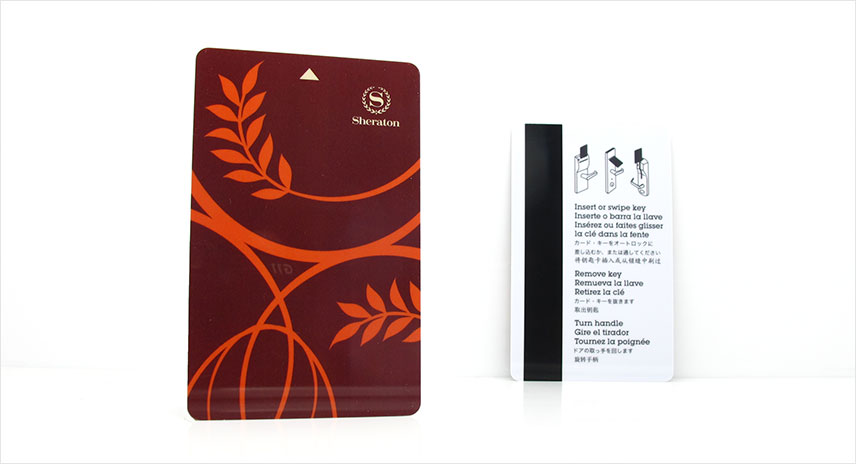Magnetic stripe card is a type of card capable of storing data by modifying the magnetism of tiny iron-based magnetic particles on a band of magnetic material on the card. The magnetic stripe, sometimes called swipe card or mag-stripe, is read by swiping past a magnetic reading head.
Mag-stripes come in two main varieties: high-coercivityforce(HiCo) at 4000oe and low-coercivity force (LoCo) at 300oe but it is not infrequent to have intermediate values at 2750oe.
High-coercivity mag-stripes require higher amount of magnetic energy to encode, and therefore are harder to erase. HiCo stripes are appropriate for cards that are frequently used, such as a credit card.
Low-coercivity mag-stripes require a lower amount of magnetic energy to record, and hence the card writers are much cheaper than machines which are capable of recording high-coercivity mag-stripes. However, LoCo cards are much easier to erase and have a shorter lifespan.
There are up to three tracks on magnetic cards known as tracks 1, 2, and 3.
Track 1: Has a higher bit density (210 bits per inch vs. 75), is the only track that may contain alphabetic text, and hence is the only track that contains the card holder’s name.
Track 2: This format was developed by the banking industry (ABA). This track is written with a 5-bit scheme (4 data bits + 1 parity), which allows for sixteen possible characters, which are the numbers 0-9, plus the six characters : ; < = > ? .
Track 3 is virtually unused by the major worldwide networks, and often isn’t even physically present on the card by virtue of a narrower magnetic stripe.



